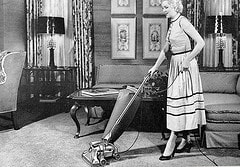|
Family and friends had been chatting over appetizers for more than an hour when I realized I’d forgotten to put the turkey in the oven. I spent the rest of the dream out and about in ever more ludicrous attempts to avert a Thanksgiving disaster. After waking up, I lay abed for minutes trying to come up with a solution. Knowing it was only a dream couldn’t stop my mind from racing.
Reason may grasp a change as soon as it happens, but emotions take time to clear the system. Danger averted can leave you still shivering with fright. I once read a theory that humor lies in the disconnect between what you know after the joke reaches its punchline and the lingering sensation of what you were led to expect. Perhaps this is why emotion is at the core of the narratives that stick with us, fact or fiction. Though I grew up on Sherlock Holmes’s intellectual feats, the mysteries that draw me now have characters I care about, not just puzzles to solve. As a writer, the challenge is not just to weave a story line but to engage the reader’s emotions. How to make that happen is something I’m still trying to learn.
2 Comments
Equinox comes later on this year’s calendar than most. Summer is long gone by other measures: cool nights, students back in school, more flowers faded than coming into bloom.
This summer I wrote less and gardened more than usual. It’s my third year to relish the perennials that came with the house and the wildflowers that arrive uninvited. No expert gardener, I often fail with new plantings. More successful is my “unnatural selection” approach: choose which hardy volunteers to encourage and pull the rest out of their way. Like so much in gardening, it’s a good metaphor for the rest of life. I don’t need many new plantings; apart from wishing family lived closer and bodies worked better, I have pretty well all I need or want. The trick is to keep culling out the pieces that no longer fit, so the favorite elements of my days have space to grow and thrive. With so many labor-saving devices to help around the house, it’s odd how cleaning and cooking can fill up a day. Blame twentieth-century advertising. New housekeeping technology such as the vacuum cleaner, once invented, needed a market. Rather than showing women freed up for creative arts or other pleasures, advertisers depicted them joyfully using new products to keep ever more sparkling homes.
“Because housewives are engaged in an unsupervised job, which increasingly has produced order and cleanliness rather than useful, material products, their daily compulsion to do the work must be internalized,” sociologist Bonnie Fox concluded from studying ads in the Ladies Home Journal back to 1909-10. The glorification of housework attracted women who in an earlier generation might have contributed to household income by keeping chickens or taking in laundry, sewing, or boarders. Not until the 1970s, when middle-class women took on more paid work outside home, did the hours they spent keeping house begin to decline. If cleaning and cooking bring you joy, great. If not, a simple way to thumb your nose at corporate advertising is to lower your standards. Your comfort with doing less may increase from knowing that modern expectations of housekeeping arose to boost profits. After years immersed in Tudor-Stuart England, I’m embarrassed to admit trouble keeping track of Queen Elizabeth I’s court. Sage counselor William Cecil, dashing courtier Robert Dudley, dour spymaster Francis Walsingham: Though I can match their names and portraits, they only came to life for me lately through Fiona Buckley’s mystery novels. Memorable, vivid detail is a gift of well-researched imaginative portrayals, whether in fiction, film, or the presentation of Elizabeth’s nobles at the Bristol Renaissance Faire last weekend.
The risk, for me, is to mistake the character brought to life for the character who lived. What novelists and screenwriters can’t know, they are free to make up. Unlike historians, they don’t have to break the flow with terms like “probably” or “perhaps.” Did Elizabeth and Dudley, her favorite, consummate their relationship? My opinion: She was too savvy and self-controlled to risk outright scandal or a child out of wedlock, even for her “sweet Robin.” But no one can know for sure. In the case of fictionalized accounts, readers and viewers who care will have to insert “probably” or “perhaps” for themselves. Faced with the unprecedented challenge of sending people into space in the 1960s, NASA asked researcher George Land to predict which engineers were most adept at thinking outside the box. His simple tool predicted so well, Land tried it on 1,600 four- and five-year-olds, and later the same group as they grew. His results:
Age Percent scoring “creative genius” 4-5 98% 10 30% 15 12% Adult 2% We don’t lose creative ability so much as we learn to hold it in check. To prepare for the responsibilities of adulthood, we develop essential skills at judgment and decision-making. The prefrontal cortex isn’t fully formed until age 25. Land says when we try to generate and evaluate ideas at the same time, imagination loses. Adults who show childlike creativity are those who separate generation and evaluation into two separate stages, letting the mind run free before weighing the pros and cons. Today’s favorite scapegoats for lost creativity are standardized testing and a school system designed to provide compliant industrial workers. I don’t buy it. Land did his research long before standardized tests became prevalent, and I’ve seen no evidence people were more inventive before the Industrial Revolution. If anything, children were pushed into adulthood even younger than today. What may be different now, due to rapid technological change, is an increasing need for creative imagination in meeting the challenges of adult everyday life. |
AuthorI'm a historian who writes novels and literary nonfiction. My home base is Madison, Wisconsin. Archives
July 2024
|



 RSS Feed
RSS Feed